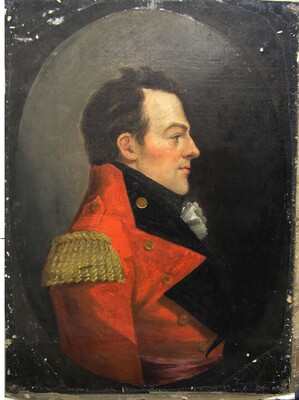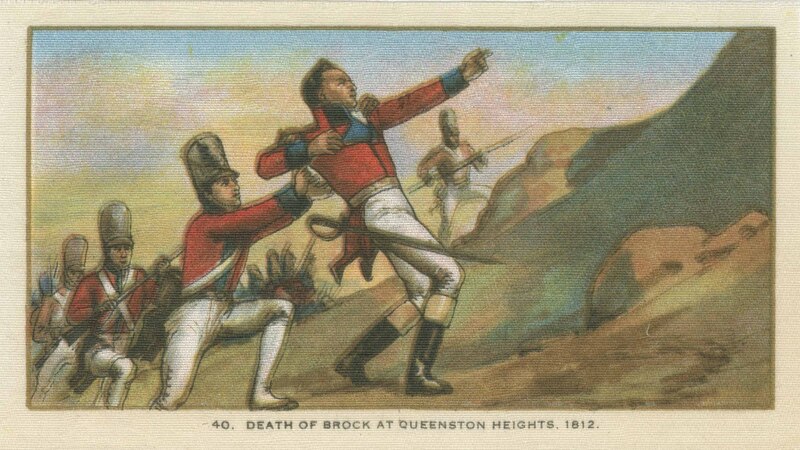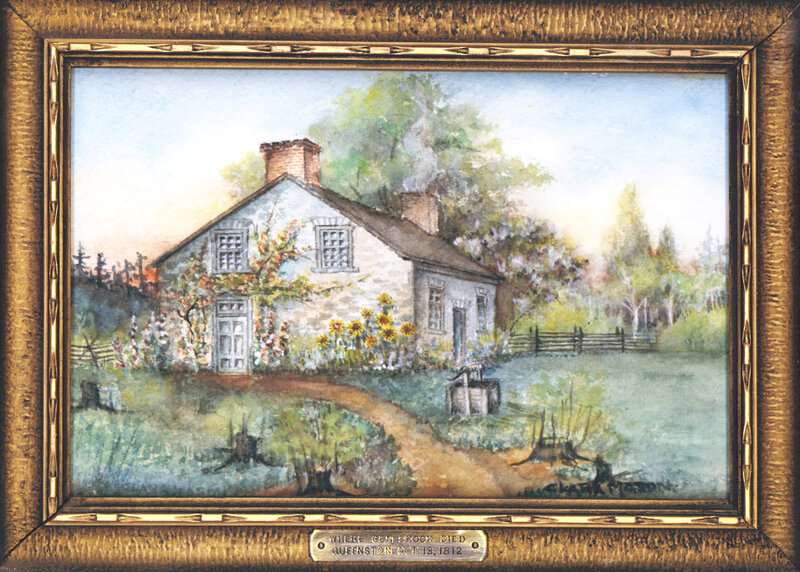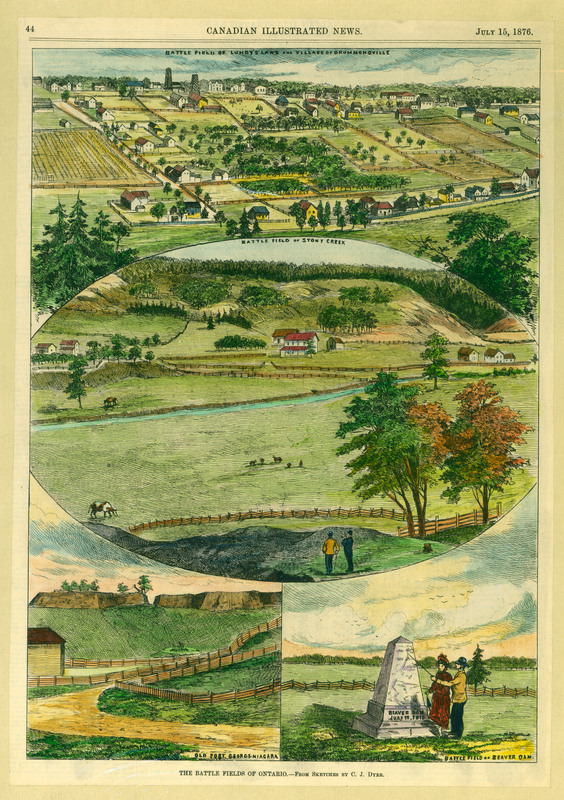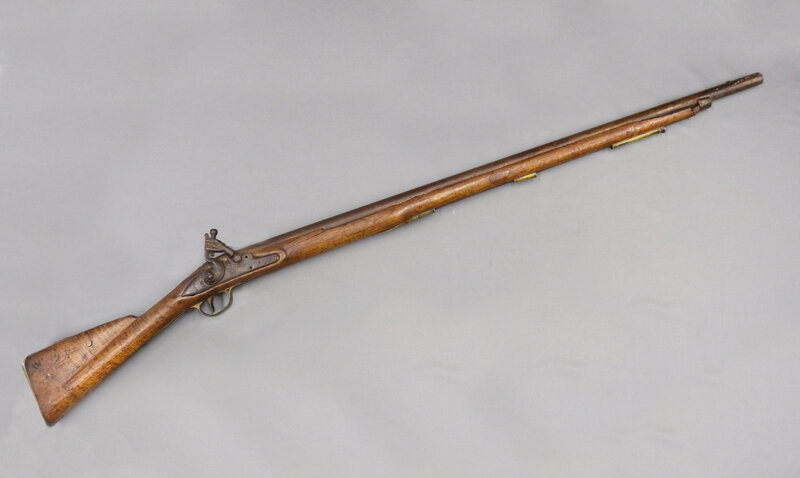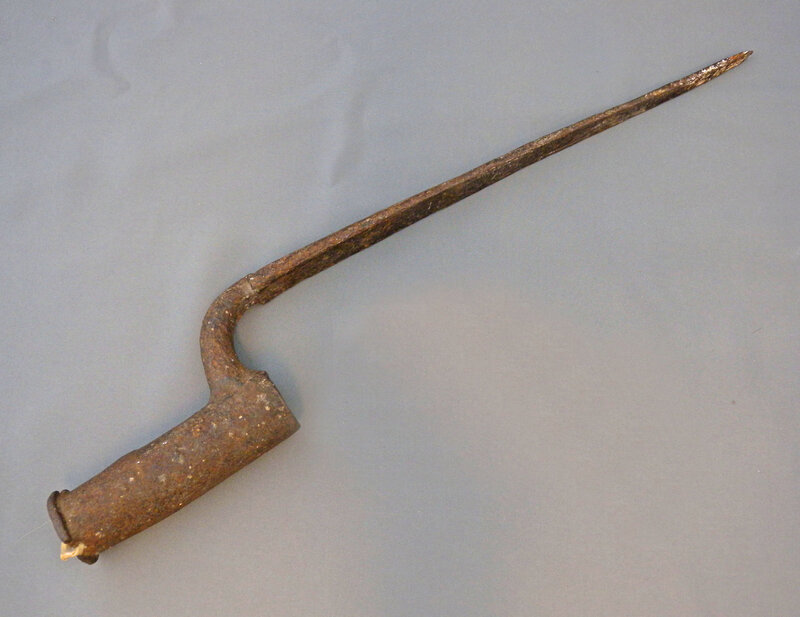Art, Maps, and Objects
Isaac Brock
Isaac Brock was born in St. Peter Port, Guernsey, England in 1769, to John Brock and Elizabeth De Lisle. In 1785, at the age of 15, Brock obtained an ensigncy in the 8th Foot. He rose through the ranks to become a Captain in 1791. He then seems to have joined the 49th regiment. His military career took him to the Barbados, Holland, Denmark, and Canada. During his time in Canada, he worked to prevent desertions, strengthen fortifications at Quebec, and improve the capabilities of the marine department on lakes and rivers, in the event of war with the United States. In 1811 he was promoted Major-General. Later that year, he became “president” and administrator of the government of Upper Canada when Francis Gore (the lieutenant governor) left for England.
When the United States declared War on June 18, 1812, Brock advocated for an attack on Fort Michilimackinac in order to secure the support of the Indians. A successful attack followed, which provided the British with the support of the Indians of the Upper Lakes region. Brock led a bold and successful attack on Detroit not long after with the help of Indian allies and their leader Tecumseh. This victory greatly increased the morale of the militia and the confidence of those in Canada that it was possible to successfully defend the colony from the Americans. A battle at Queenston in Niagara ensued on October 13, 1812, in which Brock was shot and fatally wounded. His body was taken to a house in Queenston. Just before his death, it was said he uttered encouragement to the York militia, saying “Push on brave York volunteers”. Brock’s aide-decamp John Macdonell was left in charge, but he too was killed in battle. The Americans succeeded in capturing Queenston Heights, but General Sheaffe arrived later that day with more troops and recaptured what the Americans had taken, along with about 1000 prisoners.
Brock and Macdonell were buried on October 16 in a bastion of Fort George. In 1824 they were reburied under a monument built on Queenston Heights to commemorate Isaac Brock and the Battle of Queenston Heights. The monument was destroyed in 1840, but an even grander one was built in its place. The brave and daring actions taken by Isaac Brock during the War of 1812 succeeded in keeping the Americans from capturing Canada and improved the morale of the community and militia.
The Sir Isaac Brock collection contains a variety of items including stamps, coins, portraits and drawings. The drawings include images of the Battle of Queenston Heights and Brock's Monument. Other documents contain Brock's signature. There are also several items associated with Brock's military career, including a replica black felt officer's chapeau and General Staff Officer's coatee.
Battles
Lundy's Lane, Stoney Creek, and Beaver Dams
A page of sketches from the Canadian Illustrated News in 1876 shows some of the Niagara area battlefields from the war. The caption that accompanies the illustrations is included here.
“We publish today a page of sketches consisting of the following battle fields in Ontario :--Lundy’s Lane where, without doubt, the hardest fought battle of 1812-15 took place, and in which more troops were engaged than in any other engagement of that war : the battle field of Stoney Creek where the Canadians and Indians made a night attack on the Americans and achieved a victory over a greatly superior force and obliged the Americans to retreat back to the shelter of Old Fort George which was the scene of many engagements during the war. Beaver Dam battle field is just in the suburbs of the thriving village of Thorold, and the monument covers the remains of several soldiers whose bodies were unearthed during the building of the new Welland Canal at that place.”
USS Constitution and HMS Guerriere
In July of 1812 Isaac Hull was in command of the frigate USS Constitution when he was pursued by 5 British vessels. He was able to keep out of their reach by sending out his kedge anchors and hauling up his ship to them. On August 19th, he captured the British frigate HMS Guerriere. For this, congress presented him with a gold medal and a vote of thanks.
A bronze medallion was struck to commemorate this American victory. Inscribed on the medallion are the words "Isaac Hull conquers in July 1812, the skilled by stratagem and in August, the strong in battle." Included with the medallion is a poem titled Hull's Victory, the Constitution captures the Guerriere, 19 August 1812.
RG 552 Commodore Hull Medallion, Poem, and Presidential messages
Map of the Niagara Frontier, 1818
A map of the Niagara Frontier from Travels in Canada and the United States in 1816 and 1817 by Lieut. Francis Hall shows areas associated with the War of 1812. The map shows the locations of forts used during the war including Fort Mississauga, Fort Niagara, Fort George, Fort Drummond and Fort Erie. Some battle sites are also noted on the map, including Lundy's Lane, Queenston, Chippawa, and Beaver Dams.
RG 566 Map of the Niagara Frontier, 1818
Weapons
The Brown Bess was a British musket used from about 1722 to 1838. This weapon would have been used during the War of 1812.
